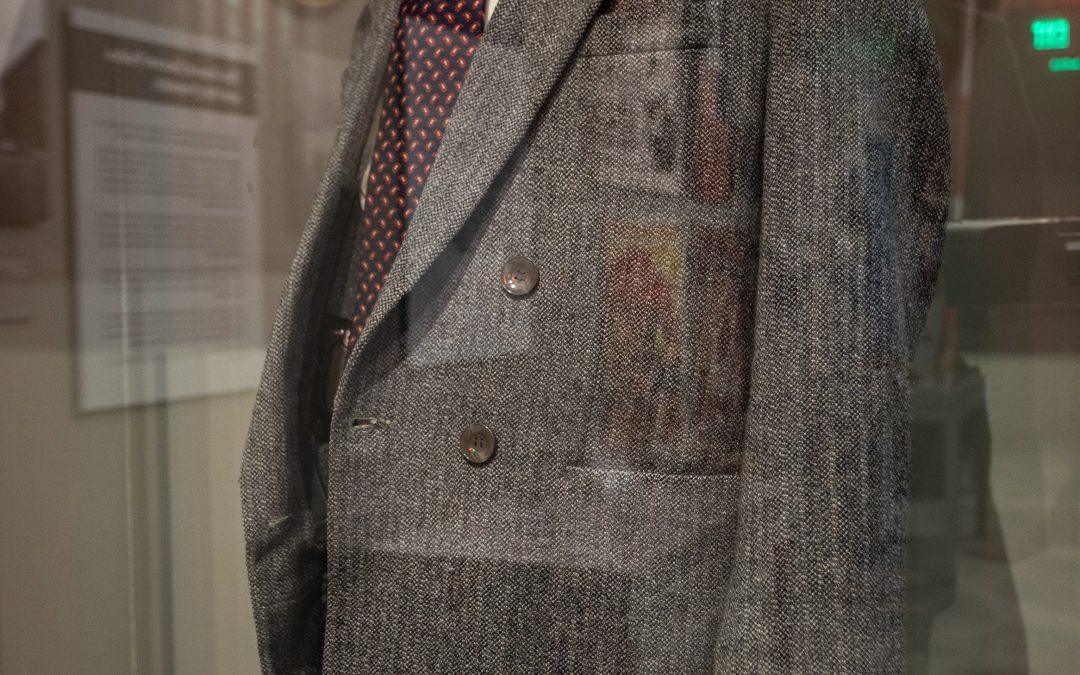During the Cold War, espionage was raised to an art form by both the United States and the Soviet Union. Advances in technology expanded beyond centuries old spying techniques, such as the use of coded messages, double agents, and invisible ink to raise the art of spy craft to unprecedented levels. These advances included sophisticated listening devices and other surveillance methods, inventive concealment tools and the miniaturization of cameras.
Cold War: Soviets, Spies and Secrets features artifacts that emphasize the stunning, creative, and sometimes bizarre array of methods developed by both the CIA and KGB to gather intelligence and project their agents.
The KGB artifacts in the exhibit, all on loan from the International Spy Museum, showcase the inventive spy craft technique of hiding information or tools in everyday items called concealment. A typical-looking men’s blazer at closer look reveals a hidden F-21 camera. Other everyday items with hidden compartments are a shaving kit, ring, cufflinks and a hollow coin. All of these artifacts are KGB issued and ignite the imagination with thoughts about how they were used and what secrets they held.
Placing the Artifacts in Context: The KGB
In 1954, the Soviet Union created the KGB— the Committee for State Security (in Russian Komitet Gosudarstvennoy Bezopasnosti) to gather foreign intelligence and serve as “secret police” inside the Soviet Union to suppress any dissent against the Communist Party and the Soviet Union. The KGB was the successor to earlier intelligence agencies in the Soviet Union.
The KGB was a feared organization both internationally and inside the Soviet Union and its client states. Its headquarters in Moscow, in a building on Lubyanka Square, also housed a prison for political prisoners. “Lubyanka” became synonymous with brutal interrogation, torture, and the execution of domestic and foreign “enemies” of the Soviet Union.
After the fall of the Soviet Union the KGB was disbanded. Today, a memorial to the victims of the KGB and its predecessor intelligence agencies, stands outside the former headquarters of the KGB. The inscription on the Memorial begins, “During the years of terror, over 40,000 people where shot in Moscow on groundless political charges.”
Cold War: Soviets, Spies and Secrets is included with admission to the Nixon Library. The Nixon Library is open seven days a week from 10 AM to 5 PM.
Nixon Library admission is $25 for adults, $21 for seniors, $19 for high school and college students, $19 for retired military, active military are free, children 5-11 for $15 and children 4 and under are free.
Nixon Foundation Members enjoy complimentary admission to the exhibit as part of their membership benefits.

